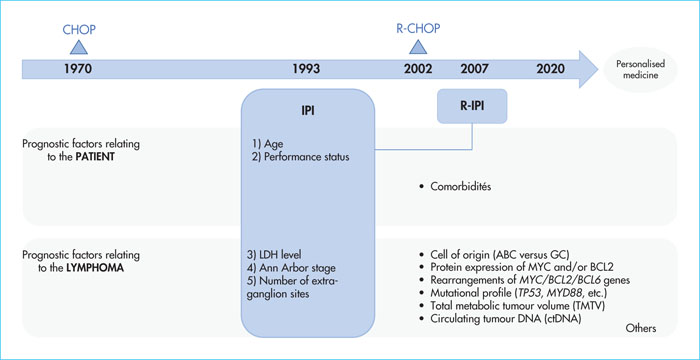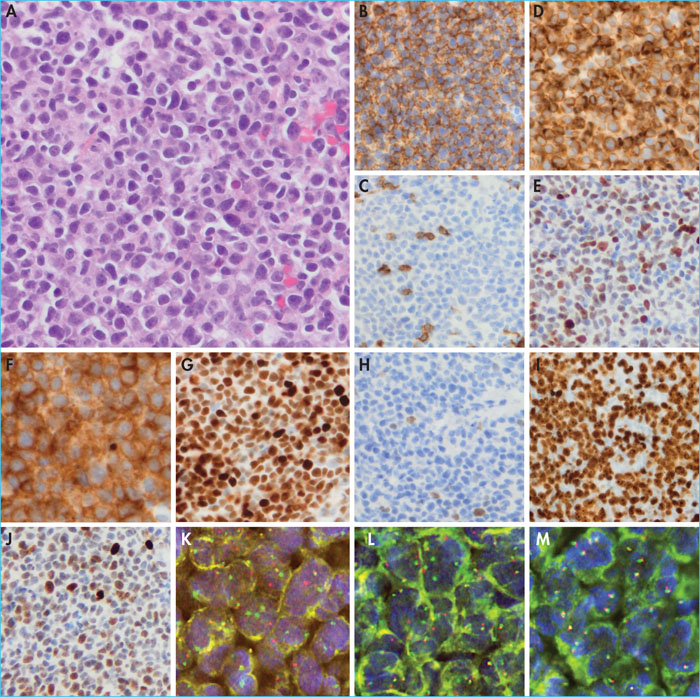Hématologie
MENUPrognostic factors in diffuse large B-cell lymphoma at diagnosis (excluding the International Prognostic Index) Ahead of print

Figure 1
Main prognostic factors identified in diffuse large cell B lymphoma (DLBCL). ABC: peripheral activated type B DLBCL; GCB: centro-follicular type DLBCL; IPI: International Prognostic Index; R-IPI: Revised IPI; R-CHOP: rituximab, cyclophosphamide, doxorubicin, vincristine and prednisone.

Figure 2
Morphological, immunohistochemical and cytogenetic features of high-grade B-cell lymphoma with rearrangement of the MYC and BCL2 genes (“double hit”) according to the 2017 WHO classification. Morphologically, the tumour cells are large, arranged in patches with a diffuse architecture (A). On immunohistochemistry, the tumour cells are CD20+ (B), CD5- (C), BL2+ (100%) (D), MYC+ (70%) (E) and have a centrogerminative phenotype according to the Hans algorithm (CD10+ [F], BCL6+ BCL6+ [G], and MUM1- [H]). The proliferation index (Ki67) is high, above 90% (I). There is heterogeneous overexpression of the TP53 protein, of low to moderate intensity, sometimes strong (60%–70%) (J). On in situ fluorescence hybridisation (FISH), there is a alteration of the MYC (K) and BCL2 (L) genes, without any associated rearrangement of BCL6 (M).

